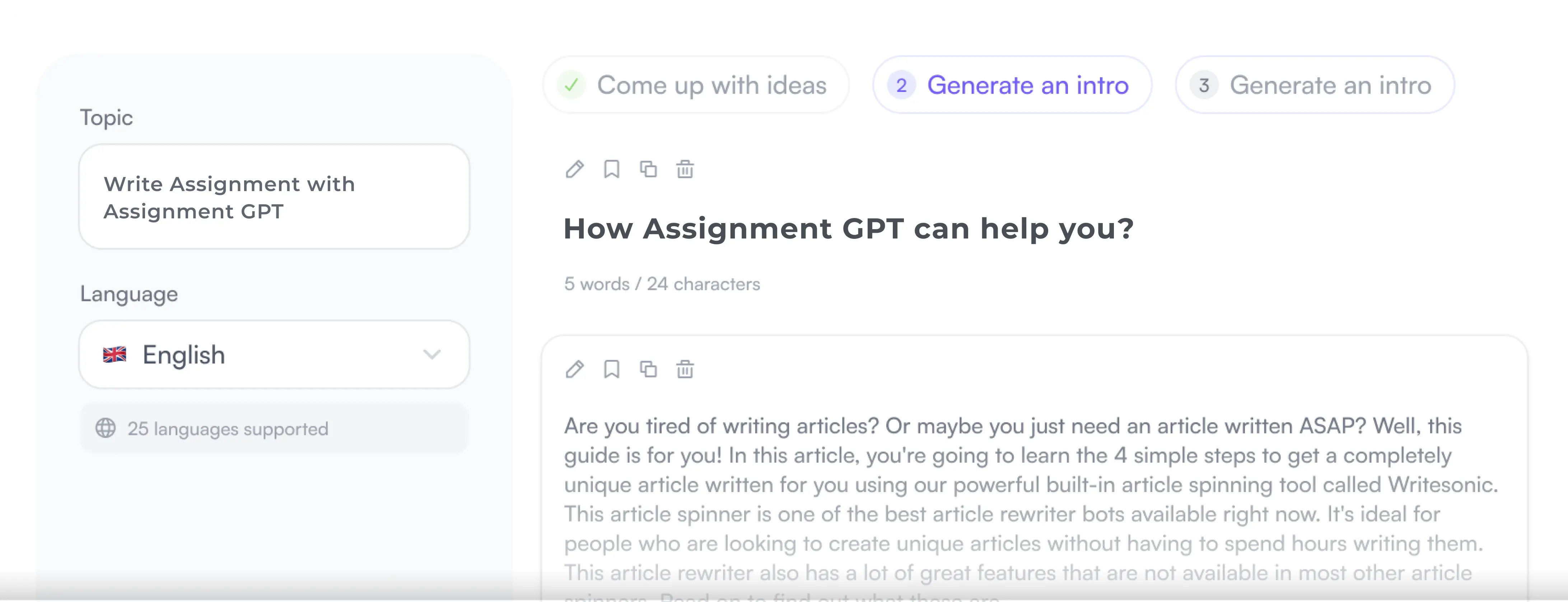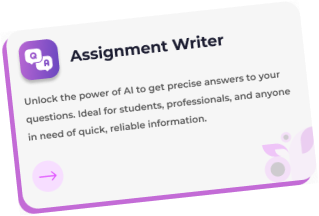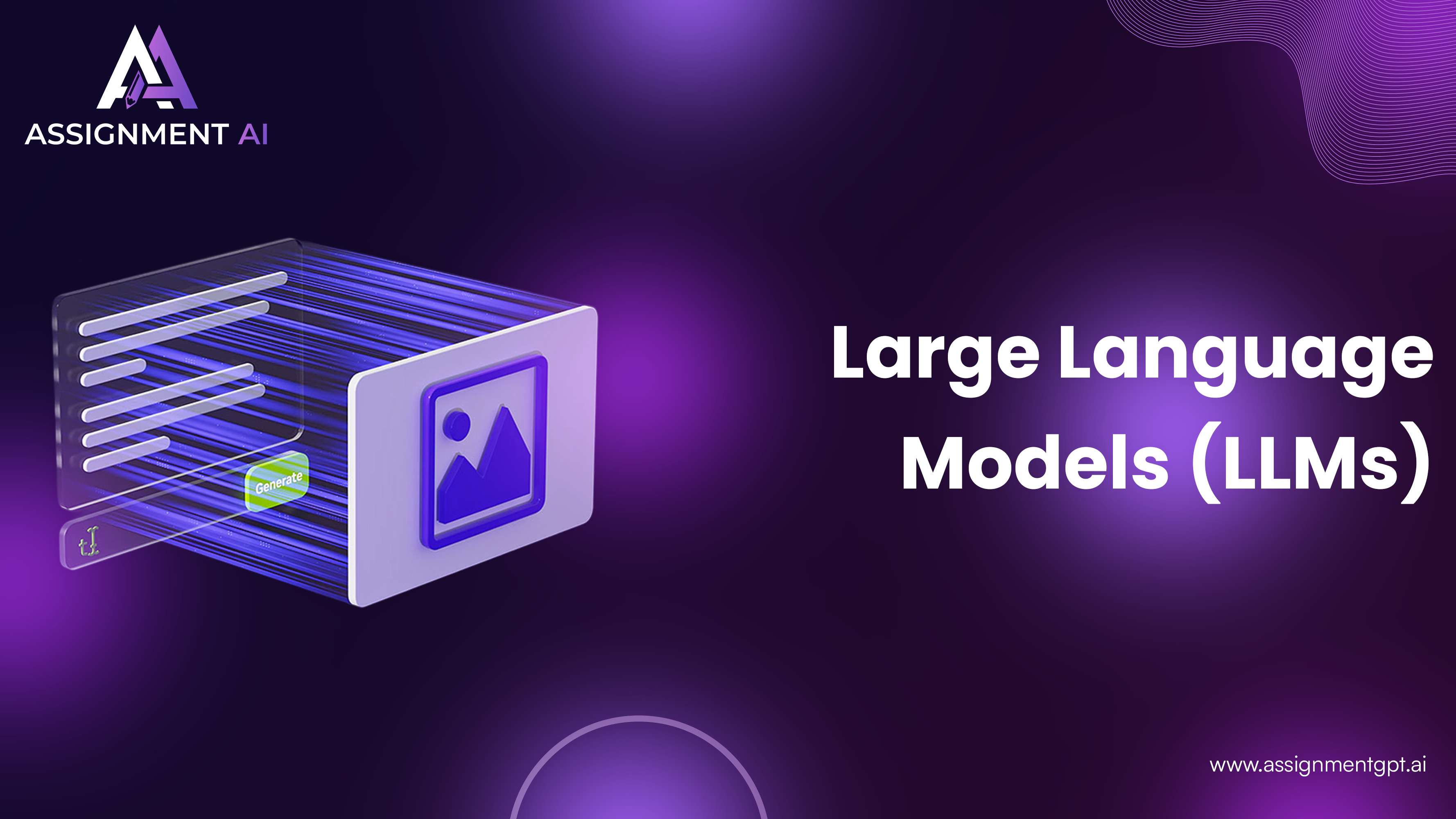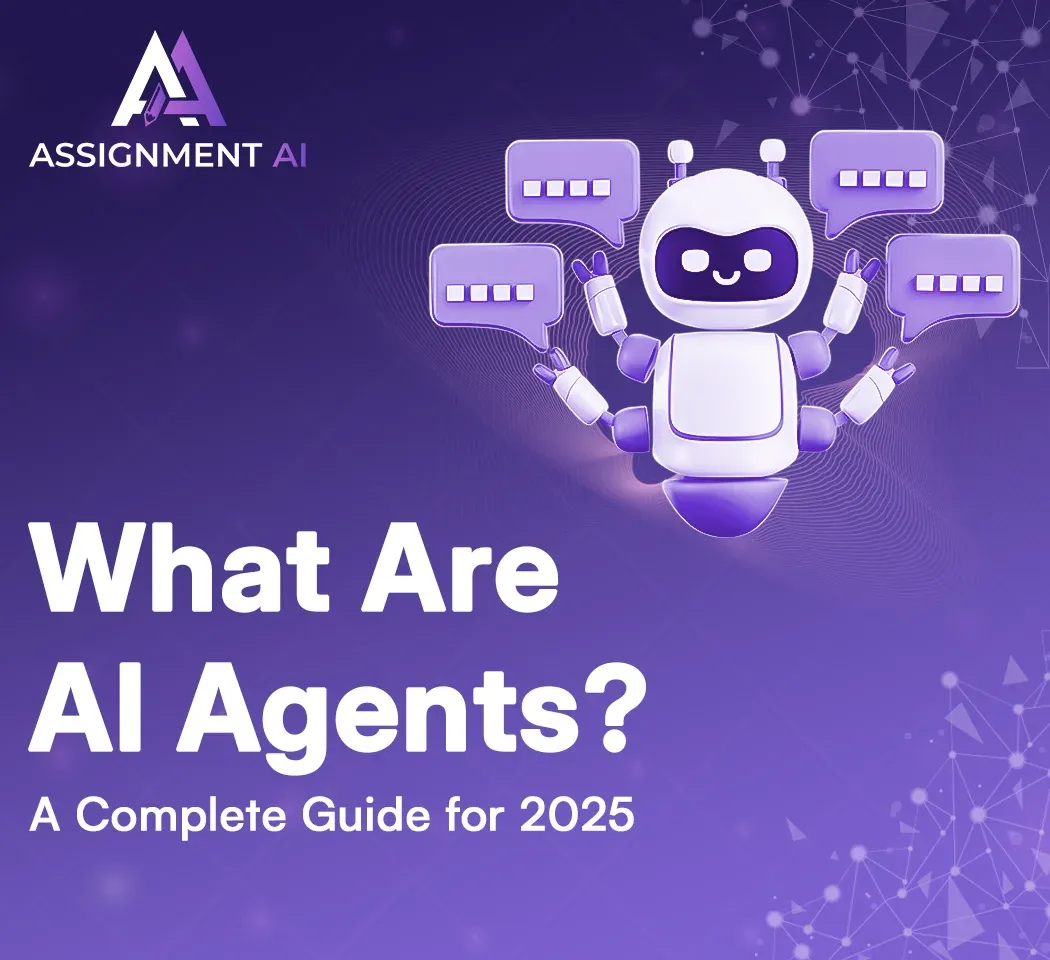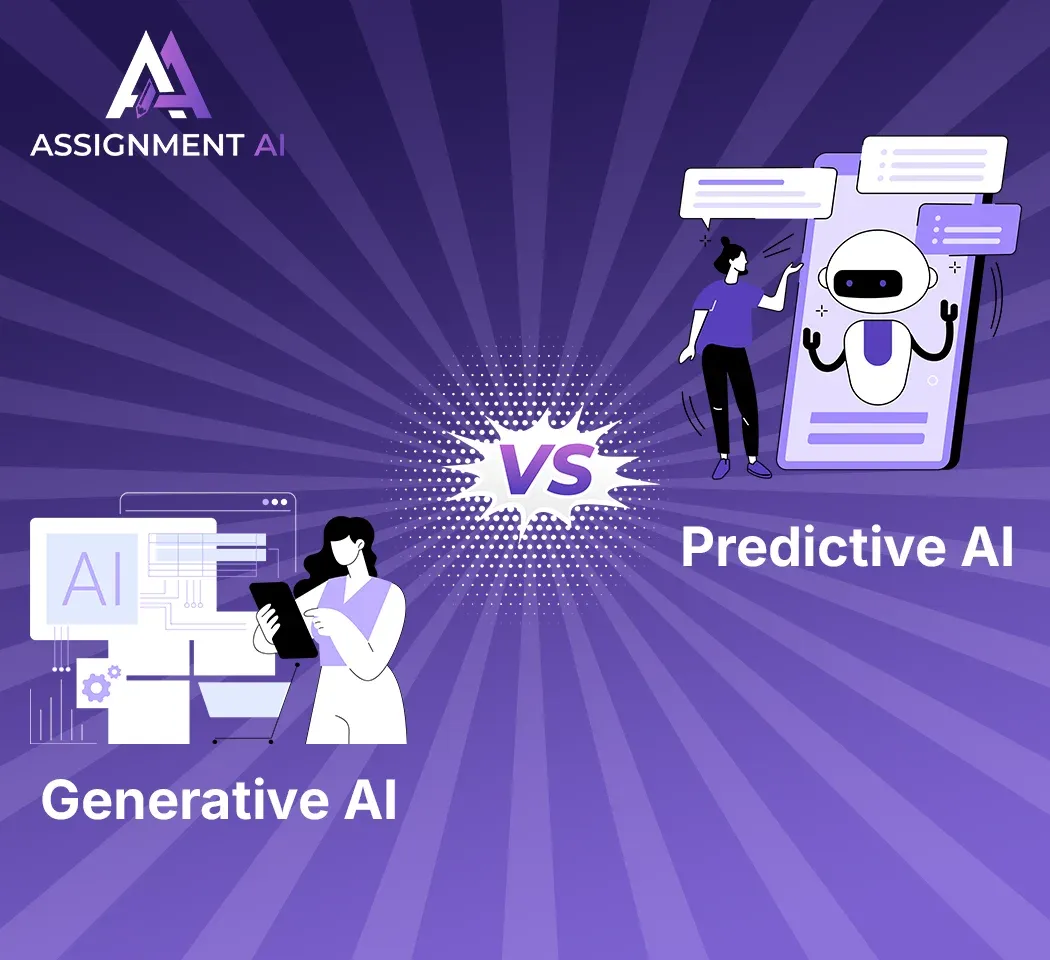AssignmentGPT Blogs
AI is simply magic.
Well obviously, it is magic that’s coded but it has a prime ability that differentiates it from the rest. It is the ability to think. And what’s the secret tool that makes it all happen?
It’s LLMs! They have an influence over almost everything that’s related to AI. Its sheer scale is quite a mystery to understand.
Curious to know what they are and how they work? Let’s learn more about LLMs in this blog! We’ll understand what LLMs meaning refers to, diving deep into the topic.
Quick Summary
We’ll be understanding what is an LLMs and will also be learning about various commonly used LLMs, signifying how they make a difference in our lives.
Understanding the Basics of LLM
LLMs are simple.
They’re AI models that help process and generate text that sounds similar to human language. LLMs definition refers to systems built using neural networks and are trained on humongous amounts of data be it books, websites, or articles.
Think of them as hoping to predict what to say. Though we’ll say this – their capabilities extend far beyond mere text prediction.
A Description of how large language models work
A transformer architecture is what powers an LLM. It gets you that superfast processing of large datasets. To understand how these models work, let’s take a short trip here:
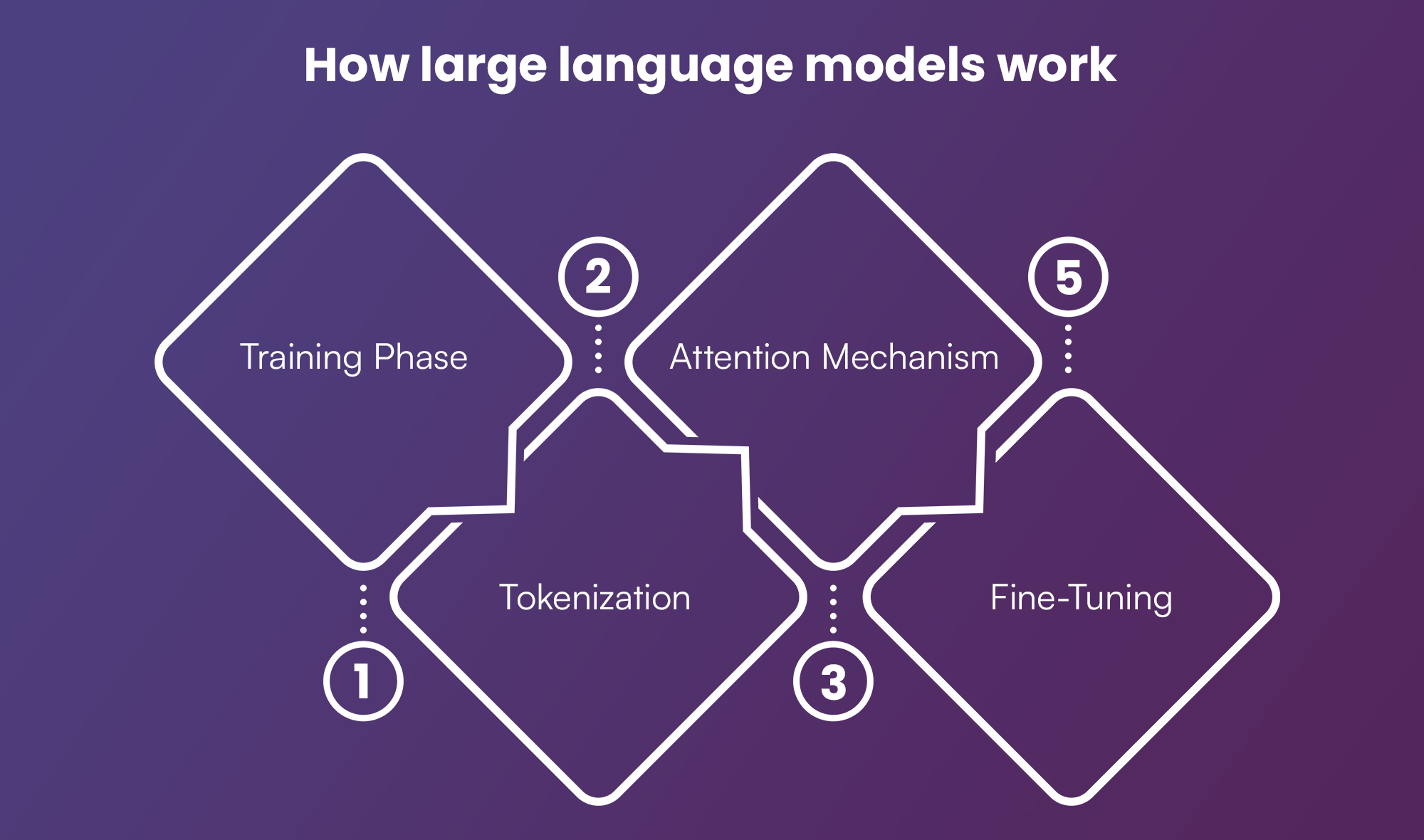 1. Training Phase
1. Training Phase
LLMs feed on data. Herein, they’re fed billions of words from diverse sources. They’ll pick up on patterns, grammatical structures, and contextual nuances through this.
2. Tokenization
An LLM model processes text in the form of ‘tokens.’ It’s basically just text that’s broken down into smaller units.
3. Attention Mechanism
With these, an LLM can easily weight the importance of different words in a sentence. This shifts the focus and allows for the model to focus on relevant parts of the input, giving an uptick in efficiency.
4. Fine-Tuning
Post-initial training, LLMs are in the end fine-tuned on specific tasks e.g. sentiment analysis, code generation, or medical diagnostics.
Key Features and Capabilities of LLM
There’s a lot that LLMs bring to the table. These models serve to power the conscience of AI systems. So, here are some of the features that they include:
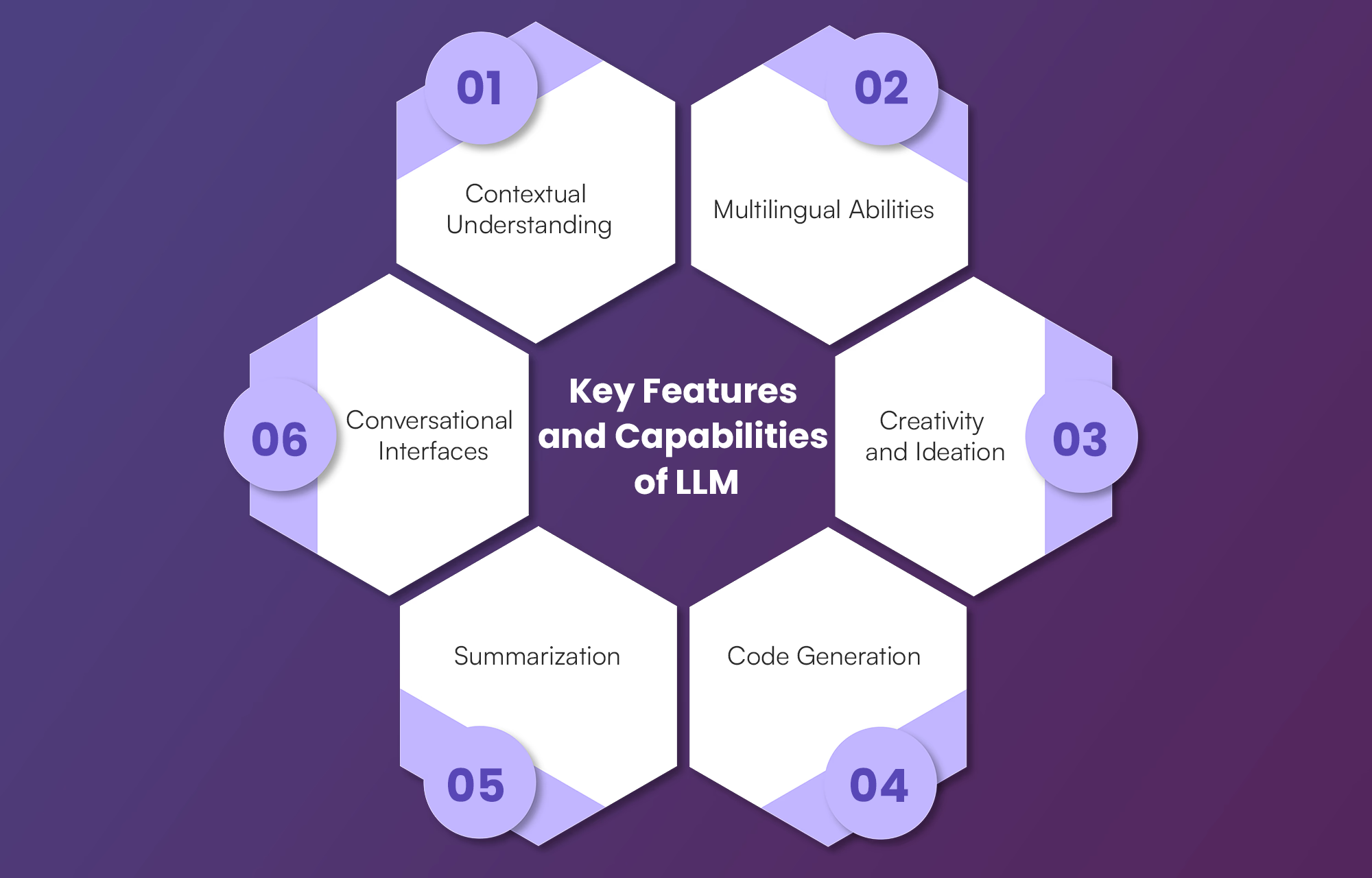
1. Contextual Understanding: LLMs can grasp the context of conversations and texts. This leads to accurate, appropriate responses.
2. Multilingual Abilities: Many LLMs can understand and generate text in multiple languages.
3. Creativity and Ideation: From generating poetry to writing scripts, LLMs can assist in creative processes. Code Generation: Developers use LLMs for writing, debugging, and optimizing code.
4. Summarization: LLMs can summarize long documents quickly and accurately.
5. Conversational Interfaces: Virtual assistants and chatbots powered by LLMs provide smooth, error-free customer service and interaction.
Also read this article : What Is Natural Language Processing (NLP)?
Advantages of LLMs
LLMs are powerhouses for any AI tool. As a result, they bring a lot of advantages. Here are some of the most influential advantages:
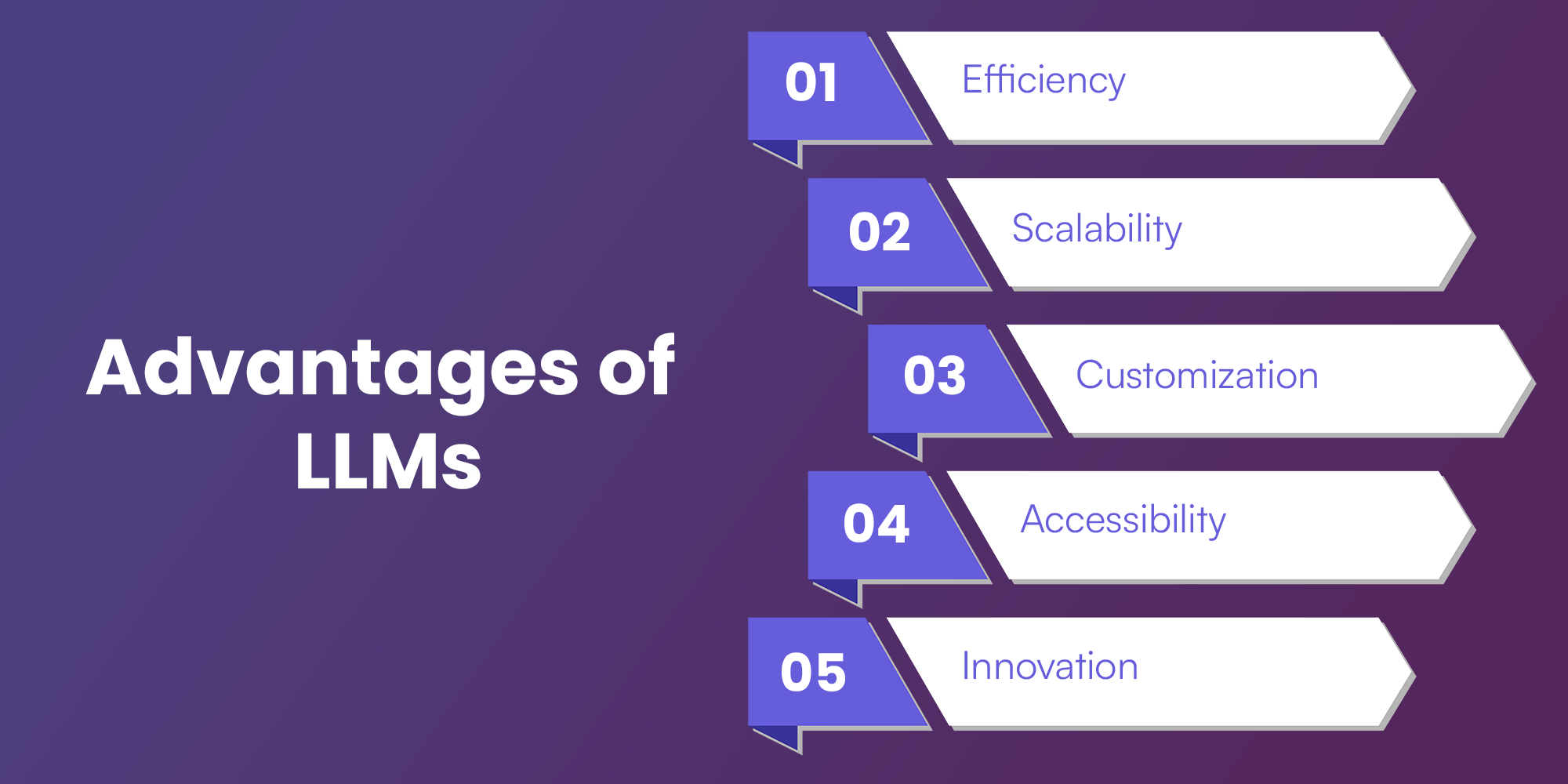
1. Efficiency: LLMs automate repetitive language tasks, saving time and resources.
2. Scalability: They can handle large volumes of data and provide solutions across different domains.
3. Customization: Fine-tuning allows LLMs to be adapted for specific industry needs.
4. Accessibility: LLMs bridge language barriers, making information accessible globally.
5. Innovation: They foster innovation by generating ideas, improving creativity, and enhancing decision-making.
Types of LLMs
Large Language Models (LLMs) are categorized into various types based on their use cases. General-purpose LLMs, like GPT-4 and BERT, are designed for a wide range of tasks. Domain-specific LLMs, such as BioBERT, focus on specialized fields like biomedical research. Multimodal LLMs, including DALL-E, integrate multiple data types, enabling tasks like text-to-image generation. Instruction-tuned LLMs, such as ChatGPT, are fine-tuned to follow user instructions for conversational and task-oriented interactions. These variations allow LLMs to cater to diverse applications effectively.
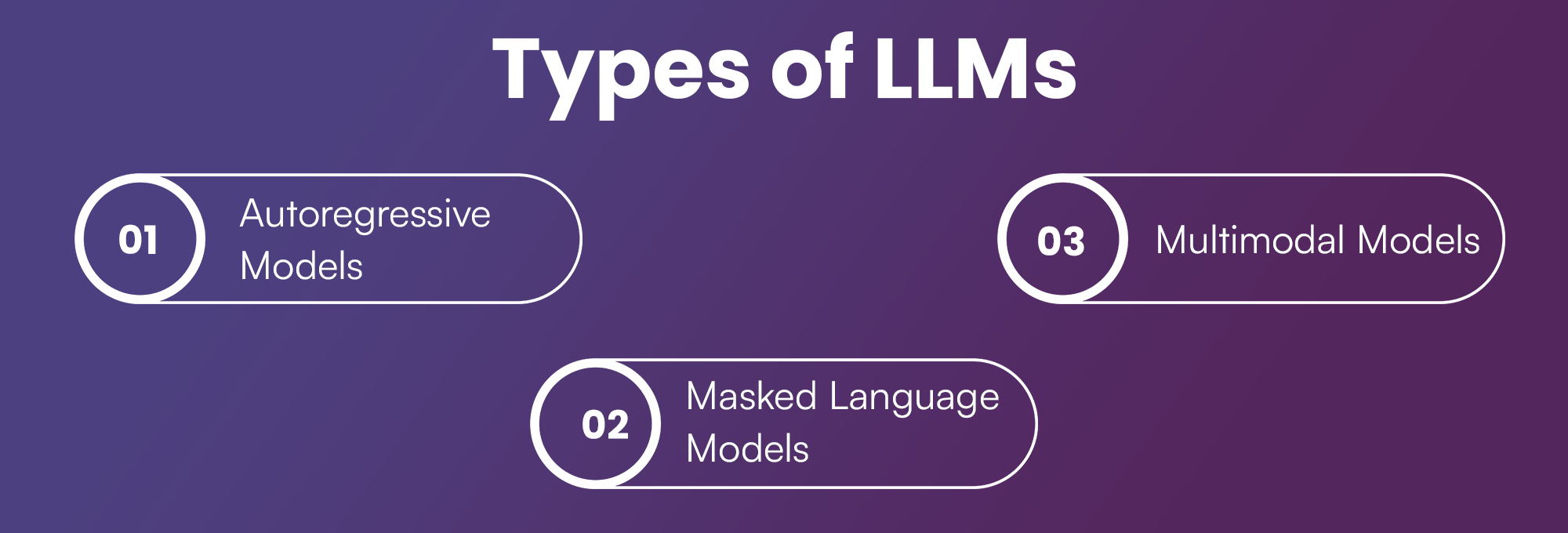
1. Autoregressive Models
These models, like GPT-4o, generate text one token at a time by predicting the next word based on previous input. This sequential nature allows them to produce highly coherent and contextually aware text.
2. Masked Language Models
BERT (Bidirectional Encoder Representations from Transformers) is a prime example of a masked language model. It predicts missing words within a sentence, making it effective for tasks like text classification and sentiment analysis.
3. Multimodal Models
Models like Gemini are designed to handle multiple forms of input, such as text and images. This capability allows them to generate rich content that integrates both visual and textual information.
LLMs - What are they used for?
LLMs (Large Language Models) are used for tasks like natural language processing, content generation, code development, language translation, sentiment analysis, virtual assistance, chatbots, summarization, research, personalized learning, and creative applications.
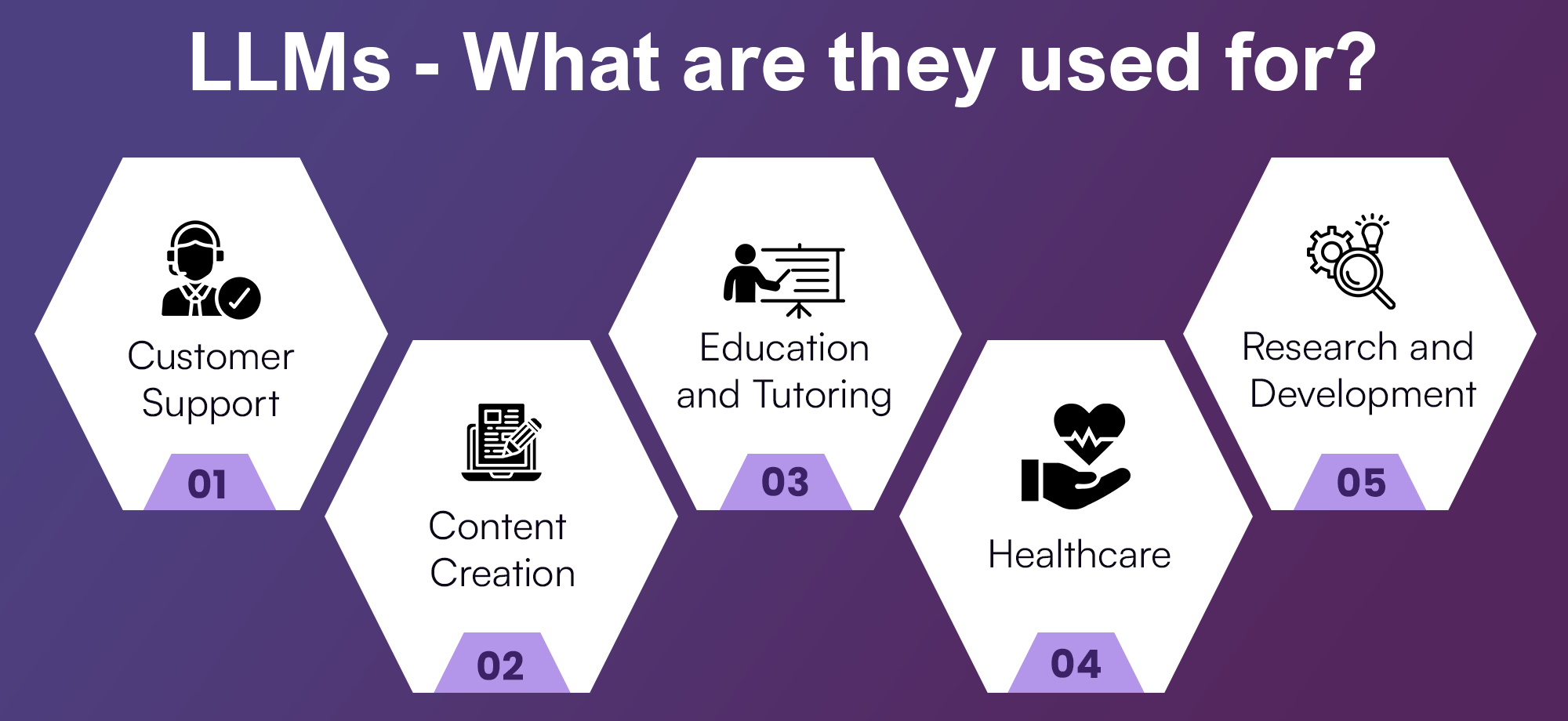
1. Customer Support
LLMs power chatbots and virtual assistants. These get you instant responses to customer inquiries, helping you get support services and better user satisfaction.
2. Content Creation
LLMs assist writers by producing high-quality content quickly and efficiently. Be it marketing copy or those lengthy blogs, LLMs help loads.
3. Education and Tutoring
AI-driven tutoring systems use LLMs to provide personalized learning experiences. This helps students grasp complex topics through interactive lessons, making education engaging and fun.
4. Healthcare
LLMs assist in medical research by summarizing scientific literature, analyzing patient records, and even suggesting potential diagnoses.
5. Research and Development
Researchers use language models to sift through massive amounts of data, summarize findings, and identify trends, accelerating the pace of innovation.
Difference Between Large Language Models and Generative AI
LLMs are a type of AI trained on vast text data for language-related tasks, focusing on understanding and generating text. Generative AI, broader in scope, creates diverse content (text, images, videos) using models like LLMs, GANs, or diffusion models.
| Aspect | Generative AI | Large Language Models (LLMs) |
|---|---|---|
| Scope | Encompasses a broad range of technologies for generating diverse content, including text, images, and data. | A specific type of AI focuses on processing and generating human language. |
| Specialization | Covers text, image, video, and data generation to create novel and diverse outputs. | Specialized in handling language tasks like translation, summarization, and sentiment analysis. |
| Tools and Techniques | Uses GANs, VAEs, and evolutionary algorithms to create various forms of content. | Uses transformer architectures, large-scale datasets, and NLP techniques. |
| Role | Augments existing data creates new content, and drives innovation across industries. | Excels in language tasks, generating coherent text, translations, and summaries. |
| Evolution | Continues evolving with advancements in multimodal content creation and data generation. | Advances by improving language understanding, complexity, and response accuracy. |
Examples of Large Language Models (LLMs) in 2025
We’ve compiled a list of the top LLMs in 2025. These LLMs include ones that can be used by all and other ones that you’ll need to purchase. Without further ado, let’s review these examples of large language models one by one:
1. Llama 3.1
Llama is Meta’s LLM offering. It provides exceptional efficiency in processing multilingual data. It’s super-valuable for global applications. With that, its lightweight architecture allows for deployment on resource-constrained devices – leading to higher accessibility.
2. GPT 4o
OpenAI’s GPT-4o is a proficient LLM that’s part of the groundbreaking GTP series. Understanding in-detail prompts, providing enhanced reasoning and problem-solving abilities.
3. Gemma 2
Gemma 2 is designed for creative content generation. Made by Google, it is designed to craft engaging stories, dialogue, and marketing copy. Not only that, but it can also simulate human-like conversations and build narratives.
4. Claude 3.5 Sonnet
Anthropic’s Claude models place focus on safety, alignment, and creativity. The Sonnet variant specializes in producing poetry and literary compositions along with philosophical content. You get a metaphor-rich text, setting it apart from the more technical LLMs.
5. Claude
The standard Claude model is highly versatile, focusing on real-time conversational AI. It can handle customer service inquiries, interactive storytelling, and educational content creation.
6. Gemini
Google’s Gemini is a multimodal LLM capable of processing and generating both text and visual data. This dual capability allows it to excel in image captioning, video analysis, and document understanding.
7. Falcon
Falcon, developed by the Technology Innovation Institute, is known for its speed and lightweight design. It offers rapid inference capabilities, making it ideal for real-time applications and on-device AI models.
8. Command
Command, by Cohere, focuses on enterprise-level automation and task management. This model is optimized for business applications, such as automating workflows, summarizing large datasets, and managing internal communications.
Conclusion
That’s pretty much it.
In this blog, we learned about LLMs and what they are, going through their various advantages. We also went through many of the popular LLM frameworks as well. We now have an idea of what LLMs are and what they aim to offer.
FAQs
1. How are LLMs different from traditional AI models?
2. Can LLMs replace human writers?
3. Are LLMs safe to use?
4. How do LLMs handle different languages?
Content writer at @AssignmentGPT
Kandarp’s world is powered by conversations, content, and creativity. With experience across branding, literature, publishing, and strategy, he has helped shape identities and stories for businesses across industries. At AssignmentGPT AI, he leads a team that blends sharp content, strong design, and local insight to turn businesses into brands that connect with people.
Master AI with
AssignmentGPT!
Get exclusive access to insider AI stories, tips and tricks. Sign up to the newsletter and be in the know!

Transform Your Studies with the Power of AssignmentGPT
Empower your academic pursuits with tools to enhance your learning speed and optimize your productivity, enabling you to excel in your studies with greater ease.
Start Your Free Trial ➤Start your success story with Assignment GPT! 🌟 Let's soar! 🚀
Step into the future of writing with our AI-powered platform. Start your free trial today and revolutionize your productivity, saving over 20 hours weekly.
Try For FREE ➤